
Cappadocia: The Land of Fairy Chimneys and Hot Air Balloons
Discover the enchanting landscapes and rich history of Cappadocia, where fairy chimneys and hot air balloon rides create a magical experience in the heart of Turkey.
Cappadocia, located in central Turkey, is a destination like no other. Known for its unique rock formations called fairy chimneys, this region offers a surreal landscape that looks as if it was taken from a fairytale. The geological wonders of Cappadocia are the result of volcanic activity and erosion over millions of years, creating a landscape that is both strange and beautiful. One of the highlights of visiting Cappadocia is taking a hot air balloon ride at sunrise. As you float above the valleys and rock formations, the landscape below transforms into a kaleidoscope of colors. This experience is often described as magical and is a must-do for anyone visiting the area. Apart from its natural beauty, Cappadocia is rich in history and culture. The region is home to ancient cave dwellings and churches carved into the rocks. The Göreme Open-Air Museum, a UNESCO World Heritage site, showcases some of the best examples of Byzantine art. Exploring these ancient sites gives visitors a glimpse into the lives of the early Christians who once lived here. Cappadocia also offers a variety of outdoor activities. Hiking through the valleys, horseback riding, and exploring underground cities are just a few of the adventures that await. The region's unique landscape provides a perfect backdrop for photography, making it a haven for both amateur and professional photographers.
Local tips in Cappadocia
- Book your hot air balloon ride in advance as they can fill up quickly, especially during peak seasons.
- Wear comfortable shoes for hiking as the terrain can be uneven and rocky.
- Visit the Göreme Open-Air Museum early in the morning to avoid crowds.
- Try the local cuisine, especially the pottery kebab, which is a regional specialty.
- Consider staying in a cave hotel for a unique and authentic experience.
Neighbourhoods in Cappadocia
Cappadocia: The Land of Fairy Chimneys and Hot Air Balloons
Cappadocia, located in central Turkey, is a destination like no other. Known for its unique rock formations called fairy chimneys, this region offers a surreal landscape that looks as if it was taken from a fairytale. The geological wonders of Cappadocia are the result of volcanic activity and erosion over millions of years, creating a landscape that is both strange and beautiful. One of the highlights of visiting Cappadocia is taking a hot air balloon ride at sunrise. As you float above the valleys and rock formations, the landscape below transforms into a kaleidoscope of colors. This experience is often described as magical and is a must-do for anyone visiting the area. Apart from its natural beauty, Cappadocia is rich in history and culture. The region is home to ancient cave dwellings and churches carved into the rocks. The Göreme Open-Air Museum, a UNESCO World Heritage site, showcases some of the best examples of Byzantine art. Exploring these ancient sites gives visitors a glimpse into the lives of the early Christians who once lived here. Cappadocia also offers a variety of outdoor activities. Hiking through the valleys, horseback riding, and exploring underground cities are just a few of the adventures that await. The region's unique landscape provides a perfect backdrop for photography, making it a haven for both amateur and professional photographers.
When is the best time to go to Cappadocia?
Iconic landmarks you can’t miss
Uchisar Castle
Discover the breathtaking views and rich history of Uchisar Castle, the highest point in Cappadocia, a true gem for every traveler.

Goreme Historical National Park
Discover the enchanting beauty of Goreme Historical National Park, a UNESCO World Heritage Site in Cappadocia, where nature and history intertwine spectacularly.

Paşabağları Müze ve Örenyeri
Discover the enchanting Paşabağları Valley, a historical landmark in Cappadocia, known for its fairy chimneys and rich cultural heritage.

Göreme Open Air Museum
Discover the rich cultural heritage of Cappadocia at the breathtaking Göreme Open Air Museum, a UNESCO World Heritage Site filled with ancient rock-cut churches.

Derinkuyu Underground City
Uncover the depths of history at Derinkuyu Underground City, a remarkable subterranean marvel that reveals the ingenuity of ancient civilizations.

Kaymakli Underground City
Discover the ancient marvel of Kaymakli Underground City, a fascinating glimpse into subterranean life in Turkey's historical landscapes.

Pigeon Valley
Discover the stunning landscapes and rich history of Pigeon Valley, a must-visit tourist attraction in Cappadocia, Turkey.

Love Valley
Explore the stunning landscapes and unique rock formations of Love Valley, an iconic destination in Cappadocia, Turkey, perfect for nature lovers and adventurers alike.

Zelve Open Air Museum
Explore the enchanting Zelve Open Air Museum, where ancient rock-cut churches and stunning landscapes tell the story of Cappadocia's rich heritage.

Imagination Valley
Discover the enchanting beauty of Imagination Valley in Cappadocia, where nature's art sparks your creativity and wonder.

Özkonak Underground City
Discover the historical depths of Özkonak Underground City, a unique underground marvel in Cappadocia, rich in history and architectural ingenuity.

Gumusler Monastery
Discover the rich history and breathtaking artistry of Gumusler Monastery, a hidden gem in the heart of Niğde, Turkey.

Old Cappadocia
Explore Old Cappadocia: A unique blend of spectacular landscapes, ancient history, and delightful Turkish cuisine in a family-friendly atmosphere.

Topdeck Cave
Experience authentic Turkish cuisine in a stunning cave setting at Topdeck Cave Restaurant in Göreme, where flavor meets tradition.

Kelebek Special Cave Hotel
Discover the magic of Cappadocia at Kelebek Special Cave Hotel, where luxury meets history in unique cave-style accommodations.

Unmissable attractions to see
Uchisar Castle
Explore Uchisar Castle, Cappadocia's iconic fortress offering breathtaking views and rich historical significance.
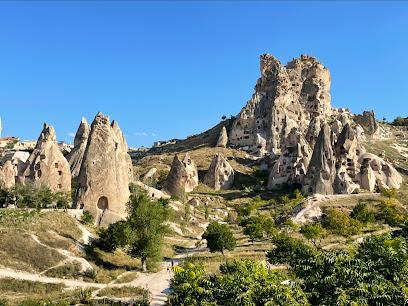
Goreme Historical National Park
Explore the enchanting landscapes and rich history of Göreme Historical National Park, a UNESCO World Heritage site in Cappadocia, Turkey.
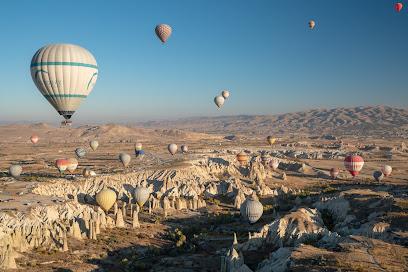
Göreme Open Air Museum
Discover the stunning Göreme Open Air Museum, a UNESCO World Heritage Site, showcasing ancient rock-cut churches and breathtaking Cappadocian landscapes.

Derinkuyu Underground City
Uncover the secrets of Derinkuyu Underground City, an ancient marvel in Cappadocia, blending rich history with stunning subterranean architecture.

Kaymakli Underground City
Discover Kaymakli Underground City, an ancient marvel in Cappadocia where history and adventure intertwine beneath the earth's surface.

Love Valley
Explore the breathtaking landscapes and unique rock formations of Love Valley, a must-see natural wonder in Cappadocia, Turkey.
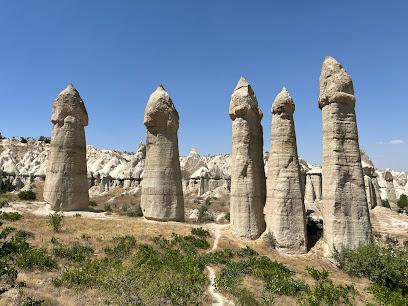
Asmali Konak
Explore the enchanting Asmali Konak in Ürgüp, a captivating cultural attraction that showcases the rich heritage and architecture of Cappadocia.

Ortahisar Castle
Explore Ortahisar Castle, a historical fortress in Cappadocia, offering stunning views and a glimpse into Turkey's rich heritage.

Özkonak Underground City
Discover the ancient wonders of Özkonak Underground City, a captivating historical site in Cappadocia, Turkey, featuring intricate tunnels and rich history.

Kizilcukur Valley(Gun batimi)
Explore Kizilcukur Valley, a breathtaking natural wonder in Cappadocia, known for its stunning rock formations and picturesque sunsets.

Güray Müze
Explore the fusion of modern art and traditional Turkish craftsmanship at Güray Museum in Avanos, a must-visit cultural destination in Cappadocia.

Twin Fairy Chimneys
Explore the majestic Twin Fairy Chimneys in Cappadocia, a surreal natural wonder with captivating landscapes and rich history.

Cappadocia Adventure
Discover the adventure of a lifetime in Cappadocia with thrilling ATV tours and bespoke travel experiences in Turkey's enchanting landscapes.

Çardak Saray Yeraltı Evi Underground cıty
Explore the mesmerizing Çardak Saray Underground City, a hidden gem in Nevşehir that unveils the mysteries of ancient subterranean life.

Turasan
Discover the rich flavors of Turkish wines at Turasan, Ürgüp's premier wine store, and immerse yourself in the region's viticultural heritage.

Essential places to dine
Sedef
Experience authentic Turkish cuisine at Sedef in Göreme—where tradition meets taste in a picturesque setting.

Gurme kebab restaurant
Experience authentic Turkish flavors at Gurme Kebab Restaurant in Göreme – where every bite tells a story.

Chef Kebap Restaurant
Experience authentic Turkish barbecue and healthy dishes at Chef Kebap Restaurant in scenic Göreme.

Old Cappadocia
Explore Old Cappadocia: A family-friendly destination blending Turkish cuisine with stunning landscapes and rich history.

CANCAN Cafe and Restaurant
Experience authentic Turkish cuisine at CANCAN Cafe and Restaurant in Göreme, where every dish tells a story of tradition and flavor.

Cappadocian Cuisine
Experience authentic Turkish flavors at Cappadocian Cuisine, where every dish tells a story from Turkey's rich culinary tradition.

Göreme Han Restaurant
Experience authentic Turkish cuisine at Göreme Han Restaurant in Cappadocia's stunning landscapes – perfect for families and food enthusiasts.

WOOD FIRE BARBEQUE
Experience authentic Turkish barbecue at Wood Fire Barbeque in Göreme - where flavor meets tradition in every dish.

Topdeck Cave
Experience authentic Turkish cuisine in a breathtaking cave setting at Topdeck Cave Restaurant in Göreme.

Namaste India
Experience authentic Indian cuisine in Göreme with delicious dishes and a cozy atmosphere at Namaste India.

Seten Restaurant Cappadocia
Experience authentic Turkish flavors at Seten Restaurant in Cappadocia—where every meal is paired with breathtaking views.

Dream Spot Cappadocia Restaurant
Experience the flavors of Cappadocia at Dream Spot Restaurant – where exquisite cuisine meets breathtaking views.

Viewpoint Cafe and Restaurant
Experience authentic Turkish cuisine with stunning views at Viewpoint Cafe in Göreme – a culinary gem amidst fairy chimneys.

Keyif
Discover the rich flavors of Turkish cuisine at Keyif Restaurant in Göreme – where tradition meets modern dining.

İnci Cave Restaurant Göreme
Experience authentic Turkish cuisine in a stunning cave setting at İnci Cave Restaurant in Göreme.

Markets, malls and hidden boutiques
Forum Kapadokya
Shop, dine, and unwind at Forum Kapadokya, the premier shopping destination in Nevşehir with a mix of local charm and international brands.
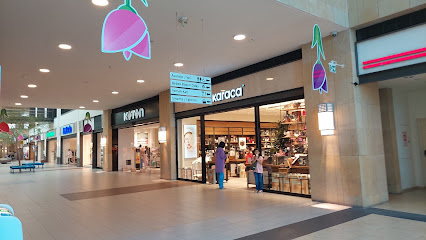
Turasan
Discover the exquisite flavors of Cappadocia at Turasan, a premier wine store in Ürgüp, where tradition meets taste.

Hopper Coffee House
Discover the charm of Hopper Coffee House in Göreme, where rich coffee flavors meet stunning Cappadocian views for an unforgettable experience.

Kelebek Special Cave Hotel
Experience the enchanting charm of Cappadocia at Kelebek Special Cave Hotel, where history meets luxury in unique cave accommodations.

Chez Galip
Discover the rich tradition of Turkish pottery at Chez Galip, where art meets craftsmanship in the heart of Avanos.

Cappadocia Visitor
Discover the enchanting landscapes and rich history of Cappadocia with expert guidance from Cappadocia Visitor, your trusted travel agency.
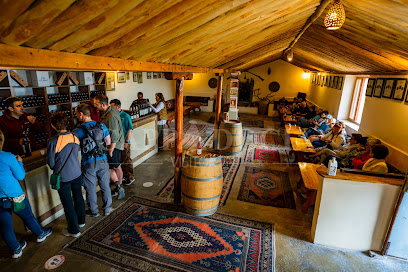
Oze Coffee Shop
Experience the warmth of Oze Coffee Shop in Göreme, where delicious pastries meet stunning Cappadocian views.

Cafe Şafak
Experience authentic Turkish cuisine and warm hospitality at Café Şafak in Göreme, the heart of Cappadocia's breathtaking landscapes.
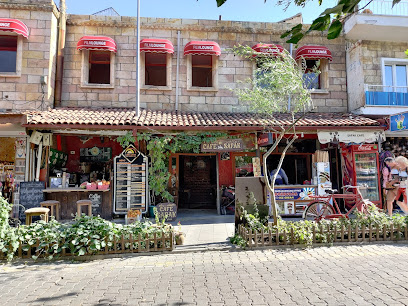
Galerie İkman
Explore traditional Turkish rugs, enjoy local delicacies, and find unique gifts at Galerie İkman in Göreme, a cultural gem in the heart of Cappadocia.

Nomads Cave Hotel & Rooftop
Experience the charm of Cappadocia at Nomads Cave Hotel & Rooftop, where traditional cave accommodations meet modern comfort and stunning views.

Turkiye Balloons Cappadocia
Discover Cappadocia's enchanting landscape from above with Turkiye Balloons, offering breathtaking views and unforgettable experiences in the sky.

Çarşı Seramik
Explore the captivating world of Turkish ceramics at Çarşı Seramik in Avanos, where art and culture come to life through stunning handcrafted pieces.

Tarihi Istanbul 1453 Börekçisi
Discover the authentic taste of Turkish börek in Göreme at Tarihi Istanbul 1453 Börekçisi, where tradition meets flavor.

Kapadokya Onyx
Explore Kapadokya Onyx for exquisite stone carvings and unique gifts that capture the spirit of Cappadocia's rich cultural heritage.

Göreme Grand Bazaar
Discover unique fashion accessories and local crafts at Göreme Grand Bazaar, a vibrant marketplace in the heart of Cappadocia.

Essential bars & hidden hideouts
Keyif
Discover the essence of Turkish and American cuisine at Keyif, a vibrant bar and restaurant in the heart of Göreme, where flavor meets hospitality.

Pasha cafe bistro
Discover a vibrant culinary experience at Pasha Cafe Bistro in Göreme, serving local and international delights amidst live music and a welcoming atmosphere.
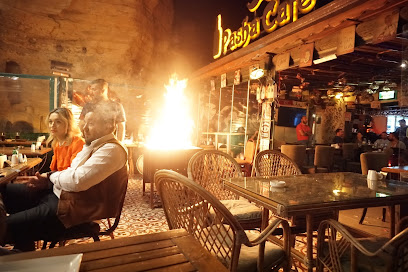
İstasyon Cafe & Restaurant
Experience the authentic taste of Turkish cuisine in a picturesque setting at İstasyon Cafe & Restaurant in Göreme, Cappadocia.

Red Red Wine House
Discover the heart of Cappadocia's wine culture at Red Red Wine House in Göreme, offering exquisite local wines and delightful culinary pairings.

The Hangout Gastro Pub
Experience the vibrant atmosphere and delicious cuisine at The Hangout Gastro Pub, a culinary delight in the heart of Göreme, Cappadocia.

Burger Wine House
Savor gourmet burgers paired with exquisite wines in the heart of Göreme, surrounded by stunning landscapes and rich history.

Kadika Rooftop
Kadika Rooftop: Discover a stunning bar with breathtaking views and lively ambiance in the heart of Cappadocia, perfect for a night out.

Kuytu Köşe Nargile Cafe & Bar
Experience the charm of Turkish hospitality at Kuytu Köşe Nargile Cafe & Bar, where delicious food meets exquisite hookah in Göreme.

Organic wine house
Experience the rich flavors of local organic wines in the heart of Göreme, surrounded by breathtaking Cappadocian landscapes.

Rupa Bar
Experience the vibrant nightlife of Göreme at Rupa Bar, where expertly crafted cocktails meet stunning Cappadocian views.
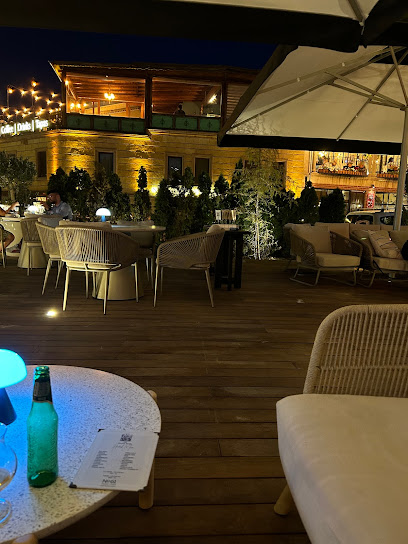
Han 1453 Hookah Lounge
Discover the charm of Han 1453 Hookah Lounge in Göreme, where traditional Turkish hospitality meets modern relaxation.

Voila Bar
Discover the charm of Voila Bar in Ürgüp, where cozy ambiance meets exquisite local drinks in the heart of Cappadocia.

Kaira Rooftop Bar & Restaurant
Experience breathtaking views and exquisite flavors at Kaira Rooftop Bar & Restaurant in the heart of Göreme, Cappadocia.

Panoramic Rooftop BAR
Unwind with stunning views and delightful drinks at the Panoramic Rooftop Bar in Göreme, Cappadocia's breathtaking gem.

PANORAMA WİNE HOUSE
Discover the best of Cappadocia's wine culture at Panorama Wine House, where exquisite wines and breathtaking views await you in Göreme.

Travel experiences inspired by this city
Explore more travel diariesLocal Phrases
-
- HelloMerhaba
[Mer-ha-ba] - GoodbyeHoşça kal
[Hosh-cha kal] - YesEvet
[Eh-vet] - NoHayır
[Ha-yur] - Please/You're welcomeLütfen
[Loot-fen] - Thank youTeşekkür ederim
[Teh-sheh-kur eh-deh-rim] - Excuse me/SorryÖzür dilerim
[O-zoor dee-leh-rim] - How are you?Nasılsınız?
[Nah-suhl-suh-nuhz] - Fine. And you?İyiyim. Ya siz?
[Ee-yee-yim. Yah siz] - Do you speak English?İngilizce konuşuyor musunuz?
[Een-gee-leez-jeh koh-noo-shu-yor moos-oo-nooz] - I don't understandAnlamıyorum
[Ahn-lah-muh-yor-um]
- HelloMerhaba
-
- I'd like to see the menu, pleaseMenüyü görmek istiyorum, lütfen
[Men-oo-yoo gehr-mek ees-tee-yor-um, loot-fen] - I don't eat meatEt yemem
[Eht yehm-em] - Cheers!Şerefe!
[Sheh-reh-feh] - I would like to pay, pleaseÖdemek istiyorum, lütfen
[O-deh-mek ees-tee-yor-um, loot-fen]
- I'd like to see the menu, pleaseMenüyü görmek istiyorum, lütfen
-
- Help!Yardım edin!
[Yar-duhm eh-deen] - Go away!Uzaklaşın!
[Oo-zahk-lah-shun] - Call the Police!Polisi arayın!
[Poh-lee-see ah-rah-yun] - Call a doctor!Doktor çağırın!
[Dohk-tor chah-yur-uhn] - I'm lostKayboldum
[Kah-yohl-doom] - I'm illHasta'yım
[Hah-stah-yuhm]
- Help!Yardım edin!
-
- I'd like to buy...Satın almak istiyorum...
[Sat-uhn al-mak ees-tee-yor-um] - I'm just lookingSadece bakıyorum
[Sah-deh-jeh bah-kuh-yor-um] - How much is it?Ne kadar?
[Neh kah-dar] - That's too expensiveBu çok pahalı
[Boo chohk pah-hah-luh] - Can you lower the price?Fiyatı indirebilir misiniz?
[Fee-yah-tuh in-dee-reh-bee-leer mee-see-neez]
- I'd like to buy...Satın almak istiyorum...
-
- What time is it?Saat kaç?
[Saat kah-ch] - It's one o'clockSaat bir
[Saat beer] - Half past (10)On buçuk
[On boo-chuk] - MorningSabah
[Sah-bah] - AfternoonÖğleden sonra
[Oh-leh-dehn soh-rah] - EveningAkşam
[Ahk-shahm] - YesterdayDün
[Doon] - TodayBugün
[Boo-goon] - TomorrowYarın
[Yah-ruhn] - 1Bir
[Beer] - 2İki
[Ee-kee] - 3Üç
[Ooch] - 4Dört
[Dohrt] - 5Beş
[Besh] - 6Altı
[Ahl-tuh] - 7Yedi
[Yeh-dee] - 8Sekiz
[Seh-keez] - 9Dokuz
[Doh-kooz] - 10On
[On]
- What time is it?Saat kaç?
-
- Where's a/the...?...nerede?
[Neh-reh-deh] - What's the address?Adresi nedir?
[Ah-dreh-see neh-deer] - Can you show me (on the map)?(Haritada) bana gösterebilir misiniz?
[(Hah-ree-tah-dah) bah-nah geh-steh-reh-bee-leer mee-see-neez] - When's the next (bus)?Sonraki (otobüs) ne zaman?
[Sohn-rah-kee (oh-toh-boo-s) neh zah-mahn] - A ticket (to ....)Bir bilet (....'ya)
[Beer bee-let (....-yah)]
- Where's a/the...?...nerede?
History of Cappadocia
-
Cappadocia's history stretches back to the Paleolithic era. The region was home to the Hittites around 1800 BCE, who were known for their advanced society and contributions to the development of the region. The unique rock formations of Cappadocia provided natural shelters and storage spaces, aiding in the development of early human settlements.
-
In the 6th century BCE, Cappadocia became part of the Persian Empire under Cyrus the Great. Later, after the conquests of Alexander the Great, the region fell under Hellenistic influence. During the Roman era, Cappadocia was an important frontier zone and a buffer against eastern invasions. The Romans established a network of roads and infrastructure, enhancing the region's connectivity.
-
Cappadocia is renowned for its significant role in the spread of Christianity. From the 4th century onwards, the region became a refuge for early Christians fleeing Roman persecution. They carved out extensive underground cities and rock-hewn churches, many of which are adorned with remarkable frescoes that depict biblical scenes. The towns of Göreme, Ürgüp, and Avanos are particularly notable for their ancient Christian heritage.
-
During the Byzantine period, Cappadocia continued to be a center of Christian monasticism. The region's distinctive landscape, with its soft volcanic rock, allowed for the creation of elaborate monastic complexes. Monks and hermits established a network of cave dwellings, chapels, and monasteries, which served as spiritual and community centers. The Göreme Open-Air Museum is a prime example of this period.
-
Following the Byzantine era, Cappadocia came under the control of the Seljuk Turks in the 11th century. The Seljuks left a lasting mark on the region with their architectural achievements, including caravanserais that supported trade along the Silk Road. In the 15th century, the Ottomans incorporated Cappadocia into their empire. The region continued to thrive under Ottoman rule, with a blend of cultures and traditions that enriched its heritage.
-
In the 20th century, Cappadocia began to attract international attention for its unique geological formations and rich historical legacy. The establishment of national parks and UNESCO World Heritage Sites helped preserve its natural and cultural treasures. Today, Cappadocia is a popular tourist destination known for its hot air balloon rides, ancient cave dwellings, and vibrant cultural festivals.
Cappadocia Essentials
-
Cappadocia is located in central Turkey. The nearest airports are Nevşehir Kapadokya Airport (NAV) and Kayseri Erkilet Airport (ASR). From these airports, you can take a taxi, shuttle service, or rent a car to reach Cappadocia. The journey from Nevşehir Airport takes about 40 minutes, while it takes around 70 minutes from Kayseri Airport. Additionally, there are bus services from major cities like Istanbul and Ankara to Cappadocia.
-
Cappadocia is best explored by car, allowing you to visit the various sites and towns at your own pace. Car rentals are available in Göreme, Ürgüp, and Avanos. Alternatively, you can use local buses and minibuses (dolmuş) to travel between towns. Taxis are also available but can be expensive for longer trips. For a unique experience, consider taking a hot air balloon ride to get an aerial view of the stunning landscapes.
-
The official currency in Turkey is the Turkish Lira (TRY). Credit and debit cards are widely accepted in hotels, restaurants, and shops in Cappadocia. However, it is advisable to carry some cash for smaller establishments and local markets. ATMs are available in major towns like Göreme, Ürgüp, and Avanos.
-
Cappadocia is generally a safe destination for tourists. However, standard precautions should be taken, such as avoiding isolated areas at night and keeping an eye on personal belongings in crowded places. There are no specific high-crime areas targeting tourists, but scams and pickpocketing can occur, particularly in busy tourist spots.
-
In case of emergency, dial 112 for ambulance, fire, or police services. The nearest hospitals are in Nevşehir and Kayseri, and there are smaller clinics in towns like Göreme and Ürgüp. It is recommended to have travel insurance that covers medical emergencies. Pharmacies (eczane) are available in major towns for minor health issues and over-the-counter medications.
-
Fashion: Do dress modestly, particularly when visiting religious sites. Avoid wearing revealing clothing. Religion: Do respect local customs and traditions. When visiting mosques, remove your shoes and cover your head if you are a woman. Public Transport: Do be respectful and give up your seat to elderly passengers. Don't eat or drink on public transport. Greetings: Do greet people with a handshake. It's customary to say 'Merhaba' (Hello). Eating & Drinking: Do try local delicacies and accept food offerings graciously. Don't refuse hospitality, as it is considered impolite.
-
To experience Cappadocia like a local, visit the weekly markets in towns like Ürgüp and Avanos where you can buy fresh produce and traditional Turkish goods. Engage with locals, as they are often friendly and willing to share stories about the region's history and culture. Don't miss the chance to stay in a cave hotel for a unique accommodation experience. For a truly local experience, consider visiting during one of the regional festivals such as the Cappadocia Balloon Festival or the International Wine Festival in Ürgüp.
Trending Landmark in Cappadocia
-
Uchisar Castle
-
Goreme Historical National Park
-
Paşabağları Müze ve Örenyeri
-
Göreme Open Air Museum
-
Derinkuyu Underground City
-
Kaymakli Underground City
-
Pigeon Valley
-
Love Valley
-
Zelve Open Air Museum
-
Imagination Valley
-
Özkonak Underground City
-
Gumusler Monastery
-
Old Cappadocia
-
Topdeck Cave
-
Kelebek Special Cave Hotel
Nearby Cities to Cappadocia
-
Things To Do in Goreme
-
Things To Do in Adana
-
Things To Do in Ankara
-
Things To Do in Konya
-
Things To Do in Alanya
-
Things To Do in Kyrenia
-
Things To Do in Famagusta
-
Things To Do in Nicosia
-
Things To Do in Protaras
-
Things To Do in Antalya
-
Things To Do in Ayia Napa
-
Things To Do in Larnaca
-
Things To Do in Troodos
-
Things To Do in Polis Chrysochous
-
Things To Do in Limassol





















